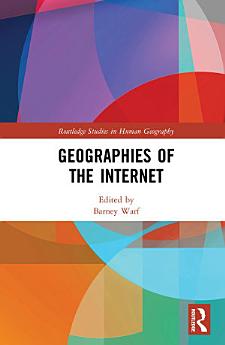Geographies of the Internet
About this ebook
Written by leading scholars in the field, the book sheds light on the origins and the multiple facets of the internet. It addresses the various definitions of cyberspace and the rise of the World Wide Web, draws upon media theory, as well as explores the physical infrastructure such as the global skein of fibre optics networks and broadband connectivity. Several economic dimensions, such as e-commerce, e-tailing, e-finance, e-government, and e-tourism, are also explored. Apart from its most common uses such as Google Earth, social media like Twitter, and neogeography, this volume also presents the internet’s novel uses for ethnographic research and the study of digital diasporas.
Illustrated with numerous graphics, maps, and charts, the book will best serve as supplementary reading for academics, students, researchers, and as a professional handbook for policy makers involved in communications, media, retailing, and economic development.
Ratings and reviews
About the author
Barney Warf is a Professor of Geography at the University of Kansas. His research and teaching interests lie within the broad domain of human geography, particularly telecommunications and the internet.







